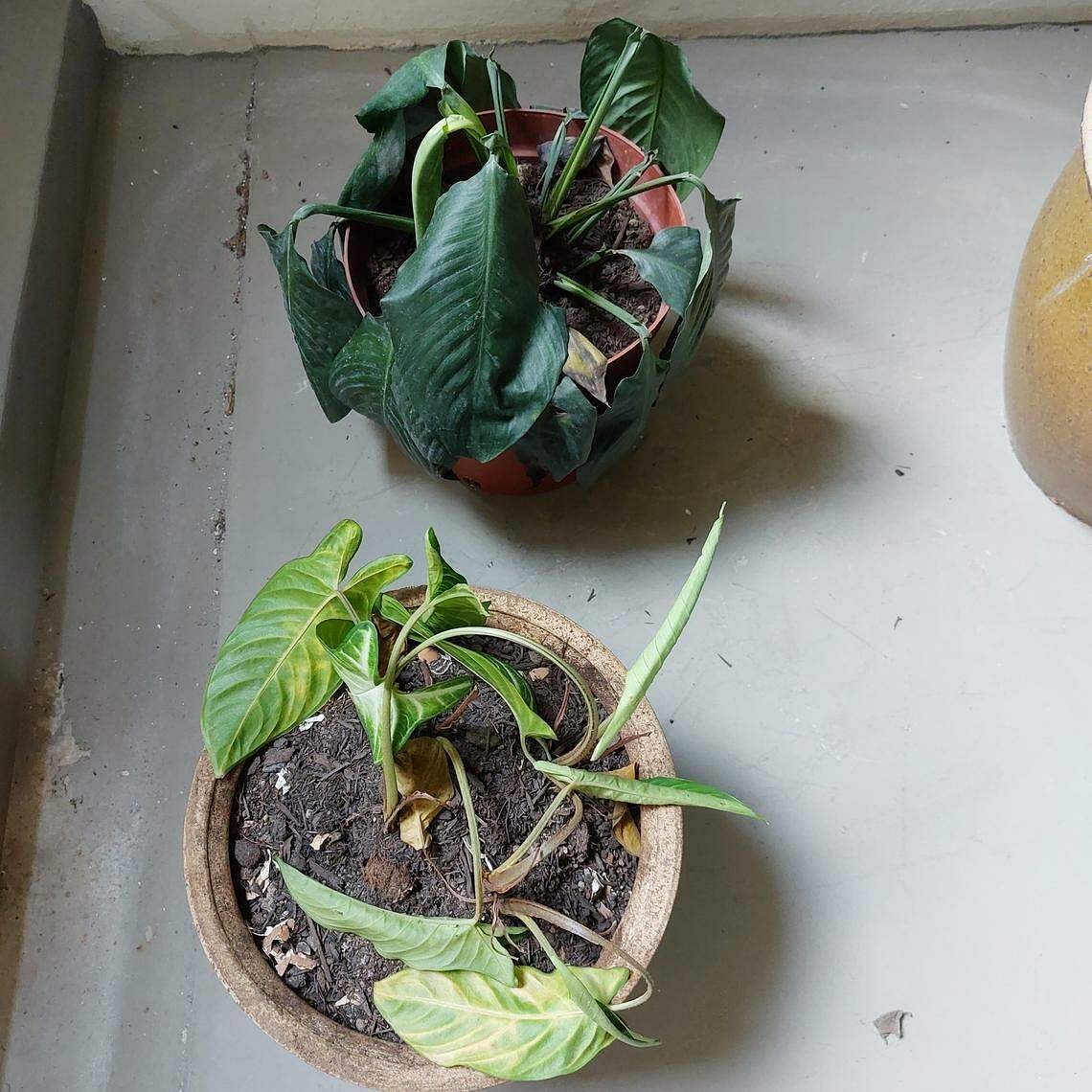Check for broad mites or thrips
My African daisy’s petals are sparse. How do I make the flower grow more petals?
Anne Yip
This plant may be damaged by pests such as broad mites and thrips when the buds are developing. Both pests feed on tender plant tissue and are quite small, which make them difficult to spot with the naked eye.
The presence of broad mites, which are microscopic, is indicated by shiny leaf undersides. Such leaves may also feel stiff and brittle. Thrips, on the other hand, are larger and cause streaks to appear on the florets of the African daisy.
Both pests can be difficult to manage. First, remove damaged flowers. Then spray the plant regularly and thoroughly with abamectin, which is available for sale in local nurseries. Rotate the pesticide with summer oil, as the different modes of action will reduce reliance on a pesticide, which can in turn lead to pests developing a resistance to it.
Plants are wilting due to lack of water

My indoor plants are drooping and the one in the lower part of the picture turned yellow as well. I water them sparingly every few days with a water test gauge and they are placed in a corridor with no direct sunlight. The soil is normally damp. I also spray the leaves and use fertiliser. What is wrong?
Christopher Yap
The plant with dark green leaves is the peace lily (Spathiphyllum) and the one with spade-shaped leaves is the Angel Wing (Phyllotaenium lindenii).
Their wilted appearance is a clear indication that both plants lack water.
When you water, make sure you have added enough for excess liquid to drain out from the holes at the base of the pot.
Water again after a few days when the soil dries out slightly, but do not let it dry out completely, as this will damage the roots and the plants’ ability to take up water.
Check the health of the roots. If you are growing these plants in deep shade, moisture in the growing mix may still persist below the surface. Roots may have rotted as a result, and plants will wilt as they cannot take up water.
If root rot has occurred, trim away damaged roots and repot the plants in fresh soil. Put a clear plastic bag over them to limit the loss of moisture.
These foliage plants need a location with four to six hours of filtered sunlight and they should not be left in deep shade for prolonged periods, as the lack of light will weaken them.
Mexican Petunia infested with whiteflies

What are these plants? I found a white powdery substance on the underside of the leaves. I sprayed neem oil and pruned affected leaves, but the substance is still there. What is it and how do I get rid of it?
Yau Hoon Lee
Your Mexican Petunia (Ruellia simplex) is infested with white flies, which are small, sap-sucking pests that can be difficult to eradicate.
First, prune your plants to reduce the number of pests. Next, spray the plant thoroughly with cypermethrin, a chemical pesticide. This needs to be done regularly, but do not use it if you have any animals or children at home.
You can rotate cypermethrin with summer oil to reduce the odds of the pests developing resistance. Consistent spraying is the key to reducing the pest population.
Desert rose needs pollination to fruit
My desert rose plants bloom regularly, but do not produce seed pods. How can I get them to bear fruit?
You Kok Kwan
The desert rose’s (Adenium obesum) flowers are naturally pollinated by moths.
In an urban environment, you may need to perform hand pollination, by taking pollen from a different plant to deposit on another flower.
First, fashion a pollination tool. You want a very fine wire consisting of a straight section at one end and a bent section at the other.
Use the bent section to harvest pollen from the base of the male flower and then insert this into the female flower. Look up the desert rose’s floral structure before attempting this so that you know what to look for.
If pollination is successful, the plant will bear fruit, which you will need to cover with a net to catch any seeds that may be dispersed when the fruit is mature. Record the date of pollination and any parentage information.
- Answers by Dr Wilson Wong, an NParks-certified practising horticulturist and parks manager. He is the founder of Green Culture Singapore and an adjunct assistant professor (Food Science & Technology) at the National University of Singapore.
- Have a gardening query? E-mail it with clear, high-resolution pictures of at least 1MB, if any, and your full name to stlife@sph.com.sg. We reserve the right to edit and reject questions.

